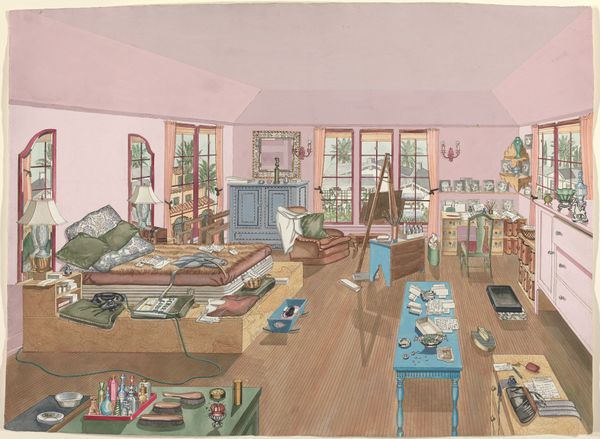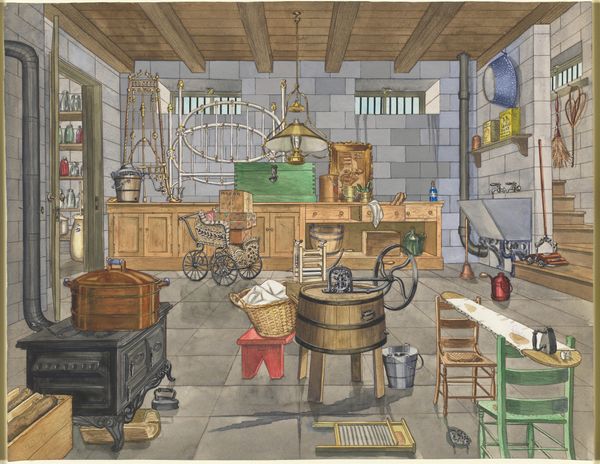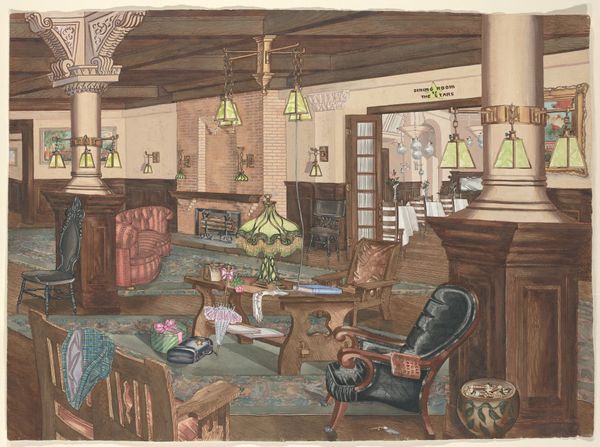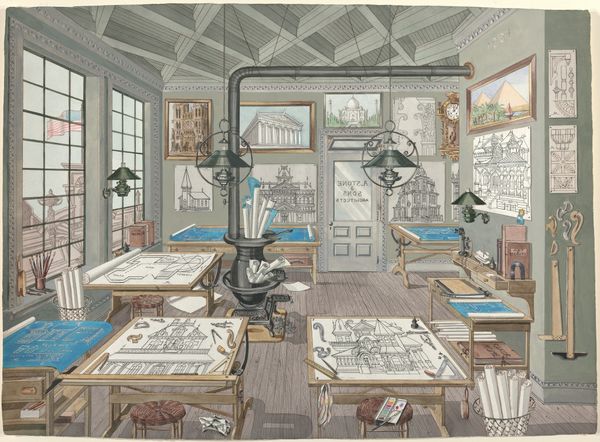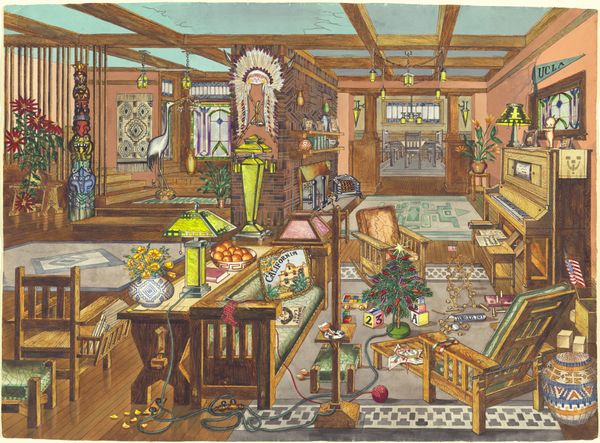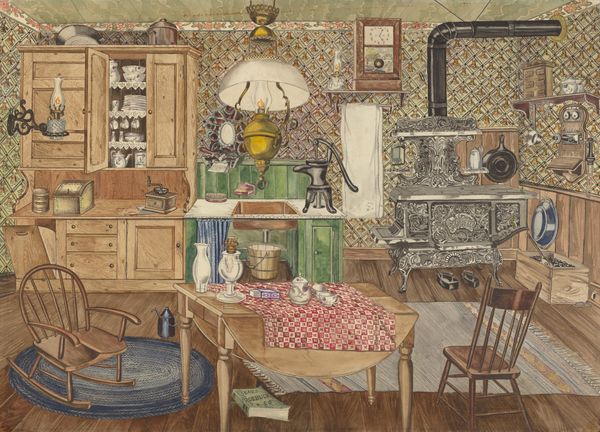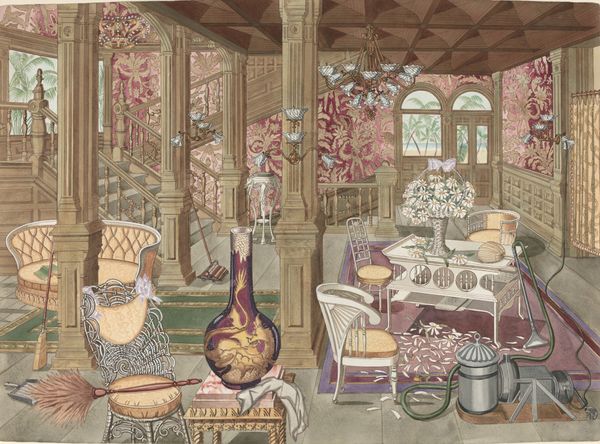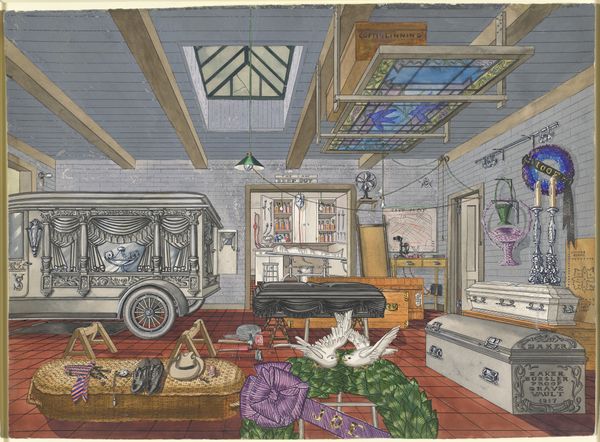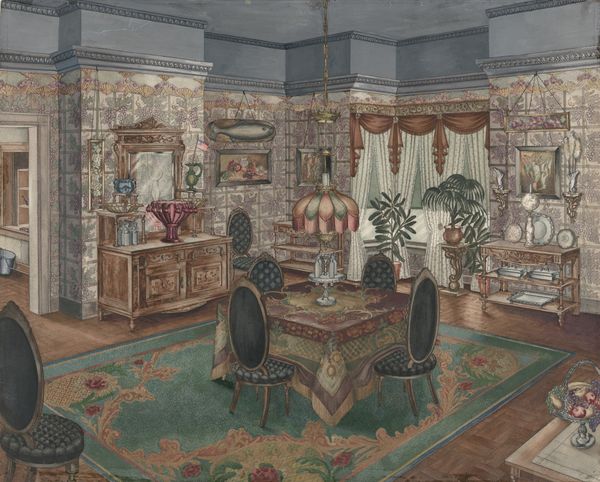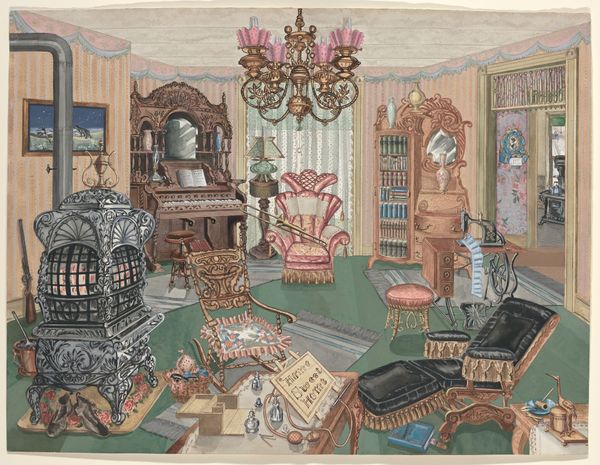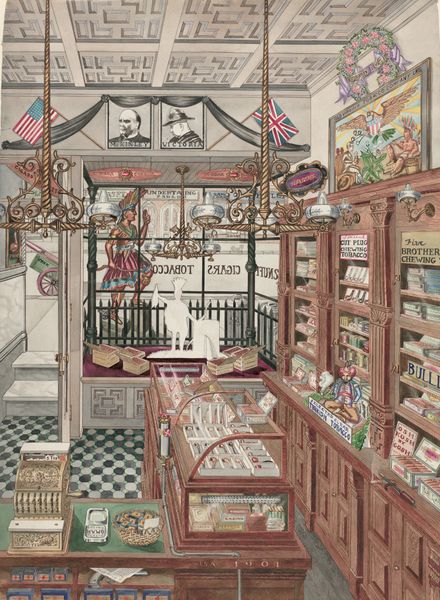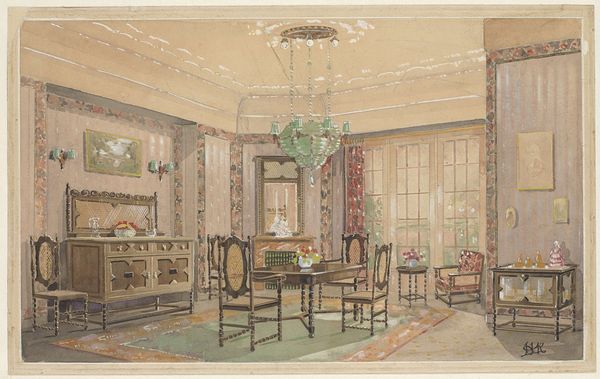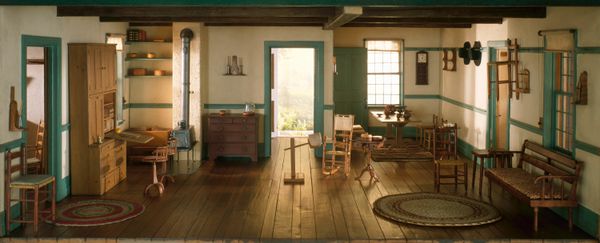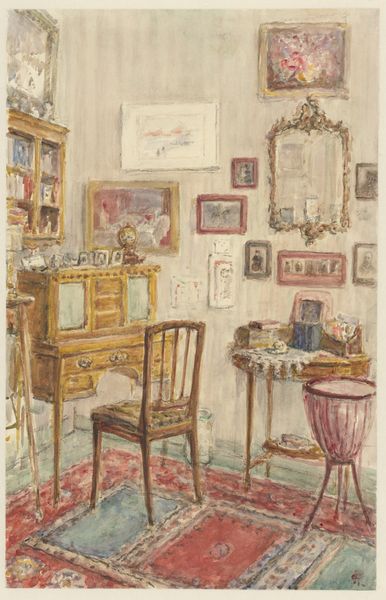
drawing, pencil
#
drawing
#
brown and beige
#
wooden interior design
#
pencil
#
genre-painting
#
realism
Dimensions: overall: 52.5 x 67.4 cm (20 11/16 x 26 9/16 in.)
Copyright: National Gallery of Art: CC0 1.0
Curator: This delicate pencil and colored pencil drawing, entitled "Semi-Rural Kitchen and Dining Room, 1910," comes to us from the hand of Perkins Harnly, likely completed between 1935 and 1942. What’s your first take? Editor: It feels…nostalgic. There's a gentle, almost melancholic atmosphere. The palette, dominated by browns and beiges, reinforces a sense of faded grandeur and a connection to a simpler past, maybe one that never existed in the first place. Curator: That’s interesting! Harnly creates a tableau heavily laden with symbolic resonance. Notice the prominence of food—apples overflowing in the buckets, presumably ready for canning in Mason jars. It suggests themes of abundance, domestic labor, and self-sufficiency, ideals deeply rooted in the cultural memory of rural America at the turn of the century. Editor: Right, and that nostalgia becomes complicated when we view this image as an artwork, exhibited now, years after it was made. The way museums contextualize images like these constructs our understanding of the past; in this case, ideas of comfort and rural idyll get circulated. Curator: Indeed. He isn't just presenting a domestic scene. The almost dreamlike quality imbued by the meticulous detail and the subdued colors elevates it beyond mere realism. It hints at the artist's interpretation of what that kitchen represents to society, and perhaps to him, at the height of the Great Depression. The kitchen itself, with its outdated equipment, feels both comforting and…claustrophobic, somehow? Editor: Absolutely. It brings to mind issues surrounding gender and domesticity within social expectations in the early 20th century, which continues to resonate today. The ladder propped up near the oven creates a spatial divide; you've got one portion with labor taking place, versus the domestic display upfront. Curator: Fascinating how you frame it. To me, the ladder serves as an allusion to climbing into the future of American ingenuity and its promises. Editor: I am struck by how this idealized past is constantly redefined and reshaped, how museums frame the conversation, so that in turn, we frame the past, present, and even future. Curator: Agreed. It’s through these complex dialogues with art that we gain insight into the culture of previous eras, and potentially a vision to consider what still moves us, inspires us, or gives us pause in contemporary times.
Comments
No comments
Be the first to comment and join the conversation on the ultimate creative platform.
